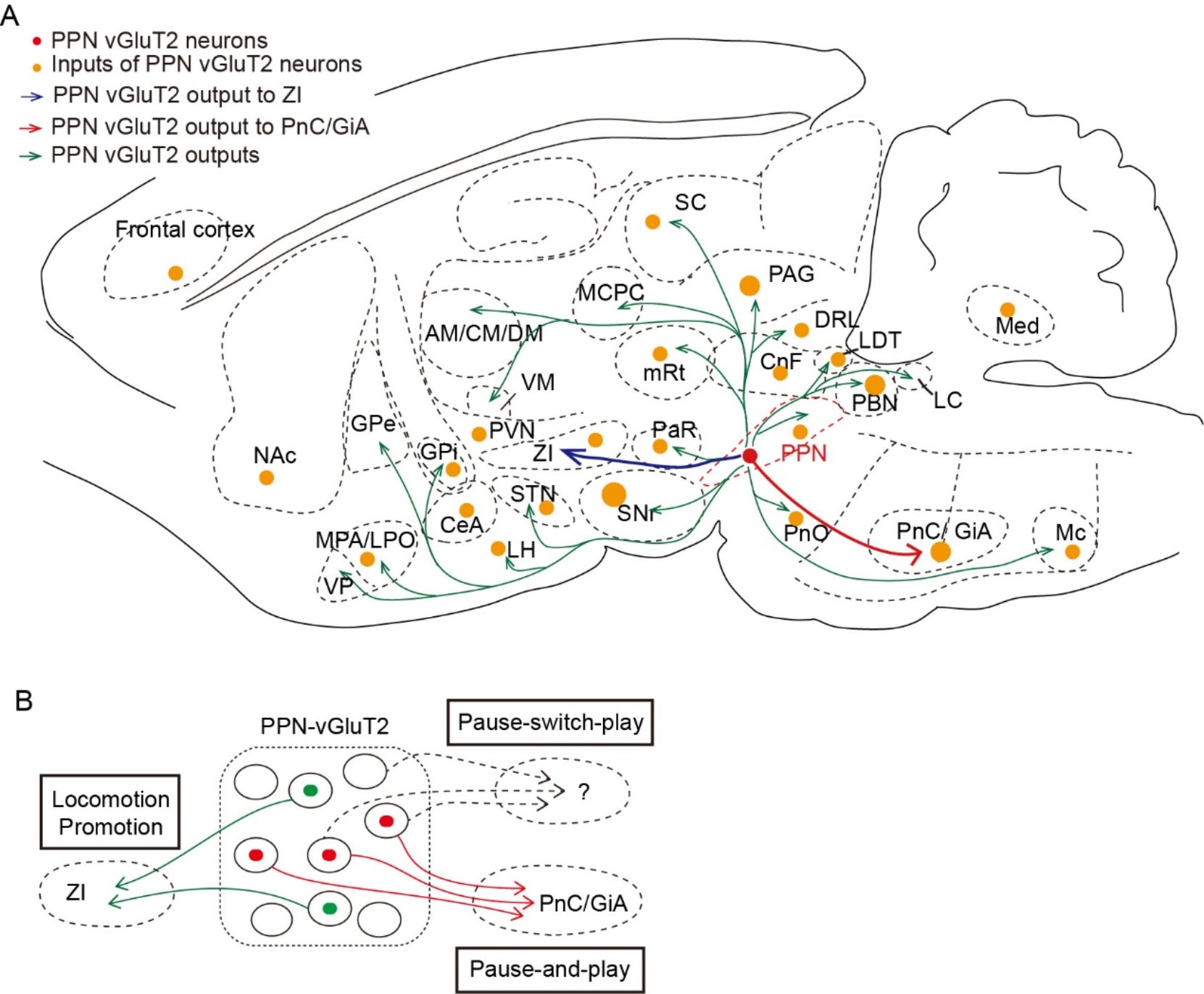Time:2024-11-14
On November 12, 2024, <<Neuroscience Bulletin>> published a research article online titled “Glutamatergic Circuits in the Pedunculopontine Nucleus Modulate Multiple Motor Functions” . This study, conducted by the research team led by Dr. Wang Zuoren from the Center for Excellence in Brain Science and Intelligence Technology, Chinese Academy of Sciences, elucidates the neural circuitry by which glutamatergic neurons in the pedunculopontine nucleus (PPN) regulate multiple motor functions, providing a crucial foundation for understanding brain mechanisms in motor control.
The pedunculopontine nucleus (PPN) is regarded as an essential brain region for motor regulation. However, the role of glutamatergic (vGluT2) neurons within the PPN in motor control remains controversial in both clinical and basic research. Clinically, the PPN is considered a potential target for deep brain stimulation (DBS) in patients with Parkinson’s disease, especially for those unresponsive to dopaminergic treatment and DBS targeting the subthalamic nucleus (STN) or globus pallidus internus (GPi). Although responses vary between individuals, a comprehensive review of case studies suggests that PPN-DBS may improve balance and reduce the incidence of falls. Nevertheless, the precise mechanisms by which PPN-DBS benefits Parkinson’s disease patients remain unclear. In basic research, recent high-impact studies have further explored the function of the midbrain locomotor region (MLR)/PPN-vGluT2 neurons, though the circuit mechanisms by which PPN glutamatergic (vGluT2) neurons contribute to motor control remain unresolved.
The research team found that rostral PPN-vGluT2 neurons exhibit strong responses to salient environmental stimuli, with activation leading to immediate cessation of movement while maintaining existing postural control. Additionally, the team discovered correlations between caudal PPN-vGluT2 neuron activity and movement, as well as ipsilateral head-turning behavior. They further mapped two key downstream pathways originating from these neurons: one projecting to the caudal pontine reticular nucleus/anterior gigantocellular nucleus (PnC/GiA), which inhibits movement and aligns with a “pause-play” behavioral model, and another projecting to the zona incerta (ZI), which promotes movement. Furthermore, the overall activation of caudal PPN-vGluT2 neurons exhibited a novel “pause-switch-play” motor regulation pattern. Collectively, these findings reveal the complex role of the PPN in motor functions and provide an integrated theoretical foundation for understanding its physiological function and therapeutic potential.

Dr. Wang Zuoren from the Center for Excellence in Brain Science and Intelligence Technology is the corresponding author of this paper. Postdoctoral researcher Dr. Huang Yanwang and Ph.D. candidate Wang Shangyi from the same center are co-first authors of this paper. Additional contributions were made by Qingxiu Wang, Chaowen Zheng, Feng Yang, Lei Wei, and Xintong Zhou from the center. This research was supported by the National “Science and Technology Innovation 2030 – Brain Science and Brain-Inspired Intelligence” major project.
AUTHOR CONTACT: Dr. WANG Zuoren
Center for Excellence in Brain Science and Intelligence Technology, Institute of Neuroscience, Chinese Academy of Sciences, Shanghai, China.
E-mail: zuorenwang@ion.ac.cn
 附件下载:
附件下载: